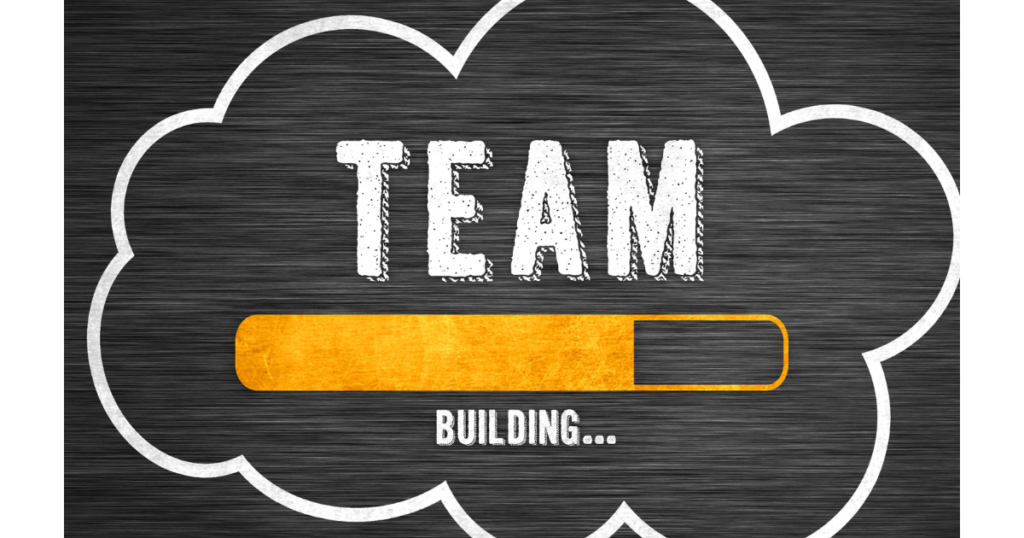Managers and CEOs often do not prioritize team-building activities, perceiving them as a waste of time. Quite often (especially with the Caribbean region), team-building is only considered when a new strategic objective is being rolled out, during organizational changes, or simply because an obligation has to be met. Moreover, now that companies face uncertain economic times, employee activities such as team-building and training are usually the first on the chopping block. Here is a consideration that is ignored: when companies are downsizing, cutting staff or facing economic uncertainty, it is the most critical time to build up your team. This article will address the most common management concerns regarding team-building activities. The goal is to help you as a leader to see how team-building activities can significantly improve employee engagement and overall performance.
This article will explore:

Benefit of Team-Building Activities At Companies
What does that mean? Well, firstly, enhanced efficiency, improved communication, collaboration, and trust among team members often lead to more efficient workflows. This, in time, can result in quicker problem-solving. Moreover, investing time in team-building can minimize conflicts and misunderstandings that often disrupt daily operations and consume significant time and resources to resolve. If you are honest, most times it is an ongoing problem of conflict and disgruntlement in the team that leads managers to consider team-building.
Your firm can also benefit from Improved team morale and engagement from team-building. This may also lead to higher employee retention rates, reducing the time and costs associated with recruiting and training new staff. Research indicates that companies with high employee engagement experience significant improvements in productivity and performance. The data from a Gallup Study shows that businesses with highly engaged employees are 23% more profitable than businesses with low engagement. Why? Engaged employees contribute to a high-performing culture where critical thinking, problem-solving, going the extra mile, and effective decision-making are valued.
What Are Management’s Concerns Around Team-Building Activities?
Management Concern #1: Perceived Lack of Time
Managers often feel that taking time out for team-building activities detracts from completing essential tasks and meeting deadlines. This is especially found in environments with high workloads and a strong focus on immediate productivity. The scheduling challenges of finding a suitable time for all team members further complicate the implementation of team-building activities. This short-term focus on productivity over long-term team development is a common barrier. However, manager must recognize that the long-term productivity gains from team-building activities outweigh the short-term time investment.
Solution:
To address time constraints, flexible and integrated approaches to team building can be highly effective. Team-building does not always require lengthy sessions; short, regular activities integrated into daily or weekly routines can be just as impactful. Brief icebreakers, quick problem-solving exercises, or regular team huddles can build cohesion without significant time investment. Additionally, incorporating team-building elements into existing meetings or events can foster a collaborative atmosphere without additional time slots. You can do this by starting a regular meeting with a quick team-building exercise or through remote and digital options especially when your team is geographically dispersed.
These approaches save on time and logistical efforts while still achieving the benefits of team cohesion. Research from McKinsey & Company suggests that effective team collaboration can increase productivity by 20-30%. This shows that flexible and integrated approaches can address the scheduling challenges while still reaping the benefits of team-building activities. These time-efficient solutions address the issue of a lack of time.

Management Concern #2: Questionable Effectiveness of Team-Building Exercises
Managers may doubt the tangible benefits of team-building activities, viewing them as ineffective or merely “feel-good” exercises without lasting impact. Past negative experiences with poorly planned or executed team-building activities can also lead to reluctance to try again. Furthermore, without clear goals and measurable outcomes, managers may see team-building as a waste of resources.
However, numerous studies have shown that well-designed team-building activities can lead to companies experiencing significant improvements in team performance, communication, and morale. These activities have been linked to measurable improvements in key performance indicators (KPIs), such as productivity, employee engagement, and job satisfaction.
Solution:
To ensure effectiveness, structured and goal-oriented team-building programs are essential. Emphasizing the importance of setting clear, measurable objectives for team-building activities ensures they are purposeful and aligned with organizational goals. Tailoring activities to address specific team needs and challenges makes them more relevant and effective. Lastly, team-building programs should have in their design regular assessment and feedback mechanisms. These ensure that you can measure the impact of team-building activities and make necessary adjustments to improve their effectiveness.
A report by the Society for Human Resource Management (SHRM) highlights that team-building activities with clear objectives and follow-up evaluations are more likely to succeed. Based on the available research, it is clear that when done right, team-building activities can have the desired effect on performance.
Management Concern 3: Budget Constraints
Team-building activities can be seen as an unnecessary expense, especially in times of tight budgets or financial uncertainty. Managers might prioritize investments in equipment, technology, or direct business needs over team-building. Additionally, it can be challenging to justify the return on investment (ROI) for team-building activities, leading managers to deprioritize them in favour of more quantifiable expenditures. This happens especially when team-building programs are not designed with an assessment and feedback loop. The truth is though that many effective team-building activities require minimal financial investment.
Solution:
Low-cost or no-cost activities can be both cost-effective and impactful. These may include team-building exercises during regular meetings, volunteer group projects, or outdoor activities. Virtual team-building tools and activities can be more affordable and flexible, especially for remote or dispersed teams. A report from Forbes highlights several low-cost team-building ideas that have proven effective, such as volunteer work, potluck lunches, and team sports.

How to Start Consistent Team Building Activities At Your Company
- Start your team-building with your leadership. Change in your companies must be leadership-driven. If you want your managers to buy into the idea of team-building as a driver of success, you need to demonstrate it. Integrate a team-building activity into your regular management meetings
- Retrain your managers. Give your managers the tools to assess their team dynamics to determine the pulse of the team. Additionally, train your managers to use team-building tools and strategies.
- Engage the right consultant. Engaging the right person to design your team-building program is key. This is the only way to ensure that your effectiveness objectives are met.
- Adjust Your KPIs. Demonstrate your commitment to improved team dynamics by making it an official part of your KPI system. This will relay the message that team-building is integral to your companies.
This article is written by Dana Hayes-Burke, Chief Business Strategist & Founder of DHB Vision Strategist and International Keynote Speaker.

One response
A couple of years ago, I assisted the planning of a team builder, sponsored by the new Sr Manager. We engaged DHB Vision Strategists to lead the session. It was surprising and refreshing to see so many people grab onto the fun side of the team builder while also taking all the learnings that it brought. I think it’s time we do it again!!!